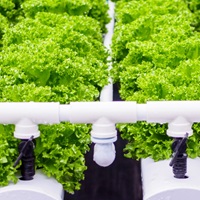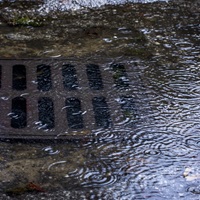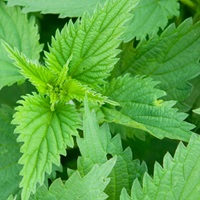Project plans
To support teachers applying for a Partnership Grant we have put together some short project plans relating to a number of engaging topics to help support the application process. Each of these plans is based on a range of projects, previously funded through the Partnership Grants scheme.
These project plans provide guidance and examples of suitable STEM partners, typical STEM partner engagement with the students, key investigations and equipment that the grant could be used to purchase, as well as the skills and legacy activities that can be developed throughout the project - all of which can be used to form a grant application. You can find more details via our website regarding the application process and deadlines for the Partnership Grants scheme.
Although each of the project plans has a suggested age range, every project listed can be adapted to suit a wide variety of ages, abilities and group sizes as needed to fit within your school.
The project plans have been listed by their main subject areas, please click on the project plan PDF from the list below to view.
How biodiverse are our school grounds and how can we improve this? (PDF)
 Investigate the different ecosystems found throughout your schools grounds, exploring common mammal, plant, insect and/or bird species and habitats and investigate ways to increase biodiversity.
Investigate the different ecosystems found throughout your schools grounds, exploring common mammal, plant, insect and/or bird species and habitats and investigate ways to increase biodiversity.
Project length minimum: 3 terms
Age suitability: 5+ years
Subjects: biology and ecology.
How can we get the best plant growth using hydroponics? (PDF)
 Explore photosynthesis and how plants process nutrients to grow by investigating the best conditions to grow plants in a hydroponics (soil-less) system.
Explore photosynthesis and how plants process nutrients to grow by investigating the best conditions to grow plants in a hydroponics (soil-less) system.
Project length minimum: 2 terms
Age suitability: 11+ years
Subjects: biology, chemistry and technology
Can we reduce our school’s use of fossil fuels by generating renewable energy on site? (PDF)
 Investigate if your school can reduce its use of fossil fuels and save money by producing energy through renewable sources such as solar and wind power.
Investigate if your school can reduce its use of fossil fuels and save money by producing energy through renewable sources such as solar and wind power.
Project length minimum: 2 terms
Age suitability: 11+ years
Subjects: physics, technology and mathematics
How accurately can we measure local weather and how has it changed over the past 5-10 years? (PDF)
 Explore what current and historical weather data can reveal about local weather conditions by investigating the most effective way to measure the weather and how to identify and interpret patterns in the data.
Explore what current and historical weather data can reveal about local weather conditions by investigating the most effective way to measure the weather and how to identify and interpret patterns in the data.
Project length minimum: 2 terms
Age suitability: 7+ years
Subjects: physics, mathematics and geography
 Investigate how coding can be used to help a buggy better move a fixed mass up a slope against gravity in different friction conditions, and gain a greater understanding of simple coding techniques.
Investigate how coding can be used to help a buggy better move a fixed mass up a slope against gravity in different friction conditions, and gain a greater understanding of simple coding techniques.
Project length minimum: 1 term minimum
Age suitability: 7+ years
Subjects: computing, physics and technology
Can we find practical ways to reduce the plastic in our environment? (PDF)
 Investigate some of the potential options to replace the use of plastics and reduce plastic pollution whilst gaining a greater understanding of its material properties, why it is such a well-used and versatile product, and what impact it has on the environment.
Investigate some of the potential options to replace the use of plastics and reduce plastic pollution whilst gaining a greater understanding of its material properties, why it is such a well-used and versatile product, and what impact it has on the environment.
Project length minimum: 2 terms
Age suitability: 7+ years
Subjects: chemistry, data science and biology
What can we do locally to reduce flooding from surface run-off? (PDF)
 Investigate the effects of built up spaces on rainfall within your school grounds. Discover the material properties of the different ground surfaces (both built and natural) and what effect they have on the flow and absorption of water during heavy rain fall events which might cause flooding.
Investigate the effects of built up spaces on rainfall within your school grounds. Discover the material properties of the different ground surfaces (both built and natural) and what effect they have on the flow and absorption of water during heavy rain fall events which might cause flooding.
Project length minimum: 2 terms
Age suitability: 11+ years
Subjects: physics, technology, data science and geography
How can we improve air quality in our local area? (PDF)
 Discover the air quality found in selected areas throughout your school grounds and investigate and understand air quality data at a statistical level, exploring also the effects of air quality on plant and lichen growth.
Discover the air quality found in selected areas throughout your school grounds and investigate and understand air quality data at a statistical level, exploring also the effects of air quality on plant and lichen growth.
Project length minimum: 3 terms
Age suitability: 16+ years (can easily be adapted for younger years/primary)
Subjects: data science, chemistry and mathematics
Dock leaves soothe nettle stings: can chemistry explore this well-known remedy? (PDF)
 Investigate the chemistry behind the well-known remedy of dock leaves being used to soothe stinging nettle stings. Discover more about the pH of plants and neutralisation, learning about the variables in growth that may affect the results.
Investigate the chemistry behind the well-known remedy of dock leaves being used to soothe stinging nettle stings. Discover more about the pH of plants and neutralisation, learning about the variables in growth that may affect the results.
Project length minimum: 2 terms
Age suitability: 7+ years
Subjects: chemistry and biology
For further inspiration, please visit our case studies pages and browse the videos and posters from a range of projects that have been recently undertaken through the scheme.
For further information about the scheme please visit our main grants page. If you have any questions, please email the Schools Engagement team.
To be among the first to hear about the grant rounds opening each year and to stay up to date with our other opportunities and resources, sign up to our UK teachers newsletter.
